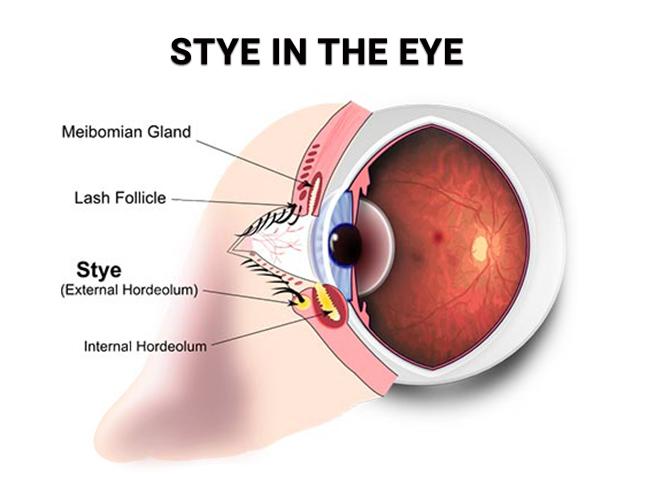A stye is a small, painful bump that can form on the edge of your eyelid. It’s caused by an infection of the hair follicle or oil gland. Styes are usually harmless and will go away on their own within a week or two.
However, if you have a stye, there are some things you can do to help relieve the pain and speed up healing: -Apply a warm compress to the affected eye for 10-15 minutes several times a day. This will help reduce swelling and pain.
-Gently massage the area around the stye with your fingertips to promote drainage. -Avoid wearing makeup or contact lenses until the stye is gone. -Clean your eyelids regularly with mild soap and water to prevent future infections.
- Gently clean the area around the stye with a cotton swab and warm water
- Be sure to not touch the stye itself
- Apply a warm compress to the area for 10-15 minutes, 3-4 times per day
- This will help reduce pain and swelling
- Avoid wearing contact lenses or eye makeup until the stye has resolved completely
- If the stye does not improve after 2-3 days, or if it begins to affect your vision, see an ophthalmologist for treatment
Table of Contents
How to treat a stye | NHS
How Do I Get Rid of a Stye Overnight?
A stye is a bacterial infection of the eyelid. It usually starts as a small, red bump that looks like a pimple. The bump may be painful and can get bigger and pus-filled.
Styes can happen to anyone, but they’re more common in people who have diabetes or an autoimmune disorder such as lupus. There are several things you can do to get rid of a stye overnight: 1. Apply a warm compress to the affected area for 10-15 minutes 3-4 times per day.
This will help reduce pain and swelling. 2. Clean your eyelid with mild soap and water twice a day. Be sure to remove all makeup before cleaning.
3. Apply tea tree oil or lavender oil to a cotton ball and apply it to the affected area 3-4 times per day. Both of these oils have antibacterial properties that can help speed up the healing process.
What Cause a Stye in the Eye?
A stye, also known as a hordeolum, is a bacterial infection of the oil glands in the eyelid. Styes are usually caused by the bacteria Staphylococcus aureus, which is found on the skin and in the nose. The bacteria enter the gland through a hair follicle or an opening in the duct that drains oil from the gland.
Most styes go away on their own within a week or two. However, some may require treatment with antibiotics to clear the infection. Warm compresses applied to the affected eye for 10-15 minutes several times a day can help speed up healing.
How Long Does It Take to Heal a Stye?
A stye is a bacterial infection of the eyelid that results in a red, swollen bump. It can be painful and annoying, but fortunately it is usually not serious and will go away on its own within a week or two. In the meantime, there are some things you can do to speed up the healing process and ease your symptoms.
Warm compress: Applying a warm compress to your eye for 10-15 minutes several times a day can help to draw out the pus and promote healing. Be sure to use a clean cloth each time and never reuse one that has already been used on your eye. Over-the-counter medication: You can try an over-the-counter ointment or cream designed for styes, such as bacitracin or Polysporin.
These can help to reduce inflammation and speed up healing time. However, they should not be used if you have an allergy to them or any other ingredient in the product. Home remedies: There are also several home remedies you can try for relief from a stye.
One is to soak a clean cloth in hot water and apply it to your eye for 10 minutes three times per day. Another isMix 1 teaspoon of salt with 8 ounces of warm water and use this solution as a compress four times daily.
Will a Stye Clear Up on Its Own?
A stye is a painful, red bump that appears on the edge of your eyelid. It’s caused by a bacterial infection of an oil gland in your eyelid. A stye can happen to anyone at any age, but they’re more common in adults.
Most styes go away on their own within a week or two without causing any permanent damage. But if you have a stye that doesn’t seem to be improving, or if it’s causing pain or vision problems, see your doctor. They can prescribe antibiotics to clear up the infection.

Credit: www.healthline.com
Conclusion
A stye is a small, red, painful bump that can form on the inside or outside of your eyelid. Styes are caused by a bacterial infection of the oil glands in your eyelid. Most styes go away on their own within a week.
You can help speed up the healing process and prevent the stye from coming back by using a warm compress, cleaning your eyelids, and avoiding makeup and contact lenses.
